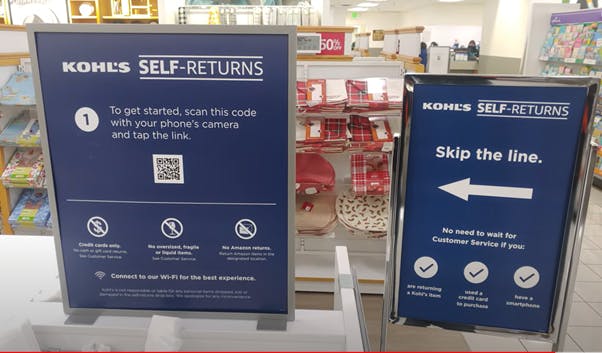
Self Returns: Removing Friction But at What Risk to Loss?
Returns are a significant cost of doing business online, especially in sectors such as apparel and shoes where returns rates can be 30% plus. Our report in 2018 (click here) highlighted the need for retailers to calculate the TRUE and full cost of returns, proposing a true cost of returns model that retailers could adopt to their business.
In a quick survey ahead of this meeting, seventeen retailers shared back their best estimates of the true cost of a return., which they estimated was calculated at €10, with the range between €5 and €25. It follows that to make a profit on some online orders will be challenging given the often low profit margins in retailing.
This meeting was set up in response to news stories from USA that Kohls were exploring self-returns, this in fact turned out to be "old news" for while Kohls did have a trial, it was then closed down.
However, we still proceeded with the meeting, with two retailers sharing their learnings on self returns, with a focus on the dark side, and the cost of losses associated with this proposition.
Below are three key takeaways.
#1: Self Returns - A Road Less Travelled.
In a pre-meeting survey, the responses from seventeen retailers suggested that for this sample at least, the strategy of self returns was not deemed to be a top priority, in fact, it was eighth on the list of the ten identified strategies. See chart.

Clearly there needs to be some caution here, the sample size was small and the respondents were more likely to represent operations and loss prevention, hence perhaps explaining why the reduction of fraud and theft were their top priorities. It could be that the CFO's # priority is increasing returns fees.
That said, what was striking from the discussion was that for the grocery sector, self returns via an app had already been implemented by many supermarkets. However, in the fashion and apparel sector, this was less the case and very few retailers had yet looked into prioritising this strategy.
However, it became clear that those fashion retailers who were not looking at self returns right now were now going to take the learnings from this meeting back to the business with a view to re-looking at this opportunity.
#2: Balancing Act: Improve Shopper Experience Vs Risk of Loss
To get the meeting started, we had the two presentations. The first was from a leading supermarket retailer, who tested with shoppers, via an app, a new self returns proposition. The other presentation was from a fashion retailer, who had deployed self returns, offering shoppers the opportunity to skip the customer service queue and to simply place their returns in a "returns box" inside the store. See picture.

In the case of the grocery retailer, the returns were limited to products where the company would be unlikely to want them back, for example, fruit, yoghurts, eggs, etc that had been spoiled, crushed, damaged, etc.
In the early months of their trial, the level of abuse was low, however over time, the abuse started to creep in, to the point where the proposition was unlikely to be profitable unless and until they were able to implement the right controls to monitor, detect and mitigate the risk of abuse and losses.
On the other hand, the fashion retailer shared with the group the huge popularity of the self returns proposition, processing over five million returns per year via self returns, reducing the time and effort involved in returning items for 99.8% of their customers.
And while for 0.2% of returns there were some concerns, their business had declared that this level of risk was acceptable with the understanding that the loss prevention team would help monitor and manage this risk of loss for the business.
#3: Digital Loss Prevention as an Enabler
It is said in many retail business that the Loss Prevention team should really be called something else, maybe the Sales Prevention team, or the Good Productivity Idea blockers, and for these reasons they are often locked out of any conversations on change, for example, self-checkouts.
However, what we have observed through this discussion on the self returns proposition is how the Loss Prevention team can be the enablers to change, helping the business deliver profitable change.
In the fashion retailer example, the retailer was able to offer shoppers the self returns service only because their loss prevention team had in place good measures to monitor the scale & nature of the risk, an alerting system that helped them very quickly determine losses, and then a clear process for identifying and then recovering their losses.
With the other case study, other business priorities and the need to build loss prevention controls have held back their ability to offer their shoppers the self returns proposition.
If you are a retailer, CPG or academic, please send me an email at colin@ecrloss.com if you would like to see the recording of the full meeting. In the meantime, in the video below, Professor Adrian Beck recaps his key takeaways from the meeting.
May 9, 2024
Main office
ECR Community a.s.b.l
Upcoming Meetings
Join Our Mailing List
Subscribe© 2023 ECR Retails Loss. All Rights Reserved|Privacy Policy
